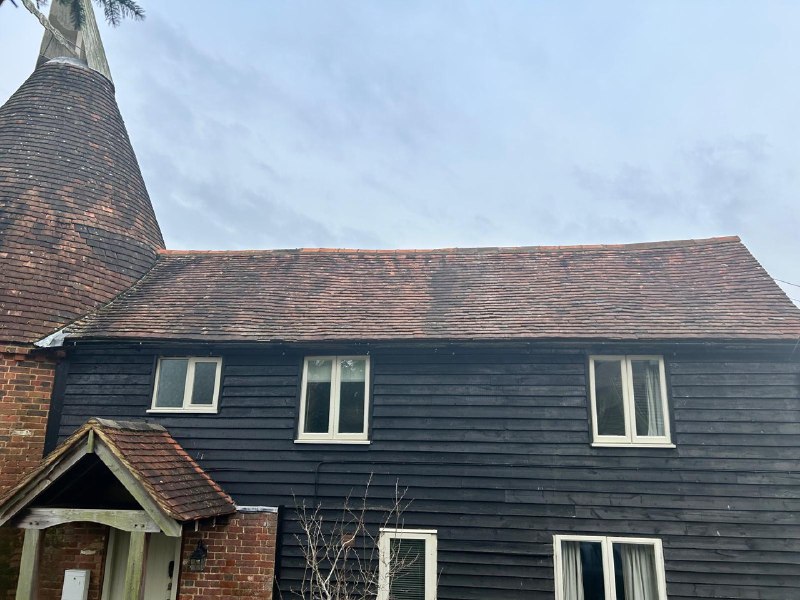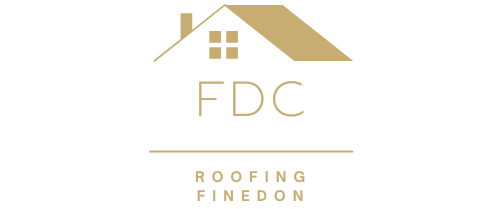Exploring Different Types of Gable Roofs: Cross, Front, and Side Gables
Gable roofs are among the most recognisable and widely used roofing styles in residential architecture, offering both aesthetic appeal and functional benefits. However, there isn’t just one type of gable roof; there are several variations, each with unique design and structural advantages. Today, we at NGF Roofing Finedon take a closer look at the distinct characteristics of cross, front, and side gable roofs, guiding you through their benefits and how each can enhance the appearance and value of your home in Finedon, Northamptonshire.
1. Front Gable Roofs
A front gable roof is a straightforward design where the gable is situated at the front of the house. This type of gable roof is commonly seen in traditional and colonial-style homes, adding character and charm to the building’s facade. It creates a symmetrical appearance, with the front-facing gable acting as a focal point, making the entrance more visually appealing.
Benefits of Front Gable Roofs
- Classic Appearance: The symmetrical design of front gable roofs offers a timeless aesthetic, enhancing curb appeal and adding a stately appearance to the property.
- Versatility: Front gable roofs complement a variety of architectural styles, from classic to contemporary, making them adaptable for different types of homes.
- Structural Simplicity: Their straightforward design generally means easier construction and lower labour costs compared to more complex roof types.
Front gable roofs also allow for larger windows, often installed beneath the gable, flooding the home’s interior with natural light and adding to its warmth and character.
2. Side Gable Roofs
Side gable roofs are another classic choice, featuring two pitched sides that slope downwards, with the gable positioned on each side of the house rather than the front. This style is particularly common in traditional and suburban homes, giving the building a balanced and orderly appearance. Unlike front gable roofs, which highlight the main entrance, side gable roofs offer a more understated look.
Benefits of Side Gable Roofs
- Increased Stability: Side gable roofs are known for their robustness and ability to handle adverse weather, providing excellent drainage and resilience in rain-prone areas.
- Ideal for Additions: A side gable roof is ideal for homes with additions or extensions, as the roofline can be extended with ease while maintaining a cohesive appearance.
- Enhanced Space for Attics: Side gable roofs often provide ample attic space, ideal for storage or additional rooms, giving homeowners more flexibility in terms of interior design.
Side gables are often paired with symmetrical facades, creating a polished, balanced exterior that enhances the home’s architectural harmony.
3. Cross Gable Roofs
A cross gable roof is a combination of two or more gable roof sections placed at right angles to each other. The intersecting sections create an “L” or “T” shape, providing a more complex and visually interesting roof design. Cross gable roofs are often seen in larger homes or those with multiple wings, allowing each section of the house to have its own distinct roofline.
Benefits of Cross Gable Roofs
- Increased Visual Appeal: The intersecting rooflines create a dynamic look, adding architectural interest and depth to the property’s exterior.
- Defined Spaces: Cross gable roofs work well in homes with multiple wings or areas, giving each section its own identity while maintaining a unified look.
- Greater Interior Space: Cross gable roofs provide higher ceilings in certain rooms, creating an airy feel that can enhance the overall ambiance of the interior.
While cross gable roofs add complexity to the roof’s structure, they offer a striking appearance that adds significant curb appeal. They can also accommodate more extensive window installations, contributing to a bright, inviting interior.
Choosing the Right Gable Roof for Your Home
The choice between front, side, and cross gable roofs will depend largely on your home’s architectural style, functional requirements, and personal preferences. Here’s a quick guide to help with decision-making:
- For Traditional Styles: Both front and side gable roofs work beautifully with traditional designs, adding classic elegance without overpowering the rest of the architecture.
- For Enhanced Visual Interest: If you’re looking to create a visually striking exterior, a cross gable roof can provide the aesthetic impact you desire.
- For Large Homes: Cross gable roofs are often preferred for larger homes, as they allow each section of the property to have a distinct roofline, adding definition and character to the structure.
Maintenance Considerations for Gable Roofs
While gable roofs are generally low-maintenance due to their sloped design, which aids in water runoff, regular inspections are essential to ensure longevity. High winds can sometimes create uplift pressure on gable ends, particularly in areas prone to storms. At NGF Roofing Finedon, we recommend periodic checks to secure roofing materials and address any minor issues before they escalate, helping maintain the structural integrity and appearance of your roof.
Conclusion
Gable roofs, whether front, side, or cross, provide distinct advantages, from enhancing aesthetic appeal to improving functionality and stability. Each type offers a unique blend of visual and practical benefits, making gable roofs an enduring choice for many homeowners. If you’re considering a gable roof or need guidance on which type would best suit your home, NGF Roofing Finedon is here to help. Our team in Finedon, Northamptonshire, brings expertise and dedication to every project, ensuring a roof that is both durable and visually appealing.
Call us on: 01933 829 064
Click here to find out more about FDC Roofing Finedon
Click here to complete our contact form and see how we can help with your roofing needs.

